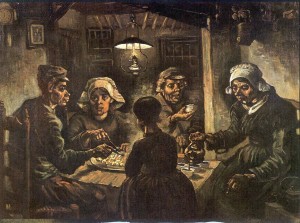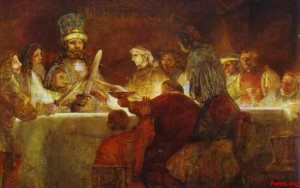The - very temporary - playground I drew at Jaarbeursplein.
Similarities

 Finished ‘Rembrandt’s eyes’ – all 702 pages of it. Not a bad companion for a quiet holiday spent on Holland’s and Friesland’s canals and waterways – the highways of the 17th century.
Finished ‘Rembrandt’s eyes’ – all 702 pages of it. Not a bad companion for a quiet holiday spent on Holland’s and Friesland’s canals and waterways – the highways of the 17th century.
Somewhere around page 400 I got the idea that I’d meet van Gogh somewhere in the book – and I did, just before the end. It was Schama’s fascination with the way Rembrandt used his paint that gave me the feeling that these two emblematic Dutch painters might have more in common than I ever realised. Van Gogh always struck me as a very physical painter. Apparently Rembrandt, going against the popular smooth style of his time, was very physical with his paint too. A quote from Schama: ” From place to place the work differs totally qua atmosphere and structure, where Rembrandt clearly experimented with different ways of drying and layering paint. In some parts … the paint seems to be brought up very thick at first, then made thinner by scraping, sanding, combing, … , in other area’s the paint is muddy, clotted, formed pools, drips and crusts.” Schama is lost for words when describing the surface of ‘the jewish bride’, which Rembrandt painted c.a. 1662 and which I have always loved, not in the least for the vibrant red colour of the bride’s dress.
Apparently van Gogh loved this painting, too. A little exalted, as usual, he said to his friend Kersemakers in 1885: “I would willingly give ten years of my life if I could sit in front of this painting for ten days with just a dry crust of bread”.
Rembrandt must have been his example in more ways than one. Compare the ‘Potato Eaters’ and ‘the Conspiracy of Claudius Civilus” – a lot of similarities there. Van Gogh’s subject is less exalted, and his palette even more muted than Rembrandts, but texture, lighting, composition have so much in common it is uncanny.
| « Updates | <-- previous post | next post --> | Self-portraits » |
|---|








